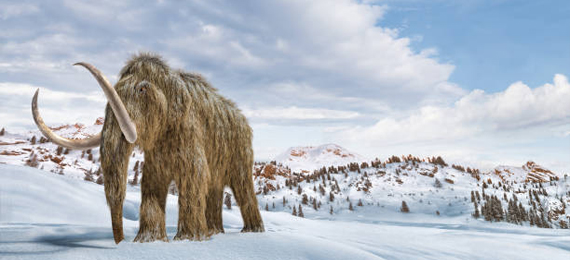
Woolly mammoths evolved from the genus Mammuthus, which first appeared 5.1 million years ago in Africa. They were said to be the ancestors of the modern elephant. They were covered in a thick fur coat of brown hair to keep them warm. Their big curved tusks may have been used for fighting. Here, know some more fascinating facts about woolly mammoths.
Fascinating Facts about Woolly Mammoths:
Woolly Mammoths Went Extinct 10,000 Years Ago
Around 10,000 years ago all the mammoths went extinct to climate change and predation by humans. Exception was a small population of the species that lived on Wrangel Island, off the coast of Siberia, until 1700 BCE.
How Big Is a Woolly Mammoth?
They were around 13 feet tall according to the International Union for Conservationof Nature (IUCN). Some of the hairs on woolly mammoths could reach up to 3 feet that are a feet tall long.
1. A Woolly Mammoth Is an Extinct Animal That Lived during the Last
- A. Ice age
- B. Century
- C. Decade
- D. None of the above
How Much Did Mammoths Weigh?
The woolly mammoths weighed around 6 tons, that is 5.44 metric tons.
They Are Covered with Fur as Well as Fat!
The woolly mammoths have foot-long hairs and an undercoat of shorter hairs for them to provide enough protection during Arctic gale. The preserved mammoth hairs are in orange color, and the researchers claim that it is because of the long burial in the ground.
Cave Paintings
The Cave paintings from 30,000 t0 12,000 years ago will show the important relationship between the ice age humans and the mammoth. These primitive paintings might have been intended as totems- Ice age humans might have believed that painting a woolly mammoth can bring them in real life, or they worshiped them.
Woolly Mammoths in Wisconsin
In Wisconsin, the largest fossils have been found of giant Ice Age wooly mammoths, which looked like elephants with long fur coats. They roamed the area and left behind some interesting fossils. One of the most important mammoth fossils found is called the Hebior Mammoth, which was found in Kenosha County. It’s not just the largest animal to have lived in Wisconsin, it’s also the largest wooly mammoth fossil that has been found in the whole of North America.